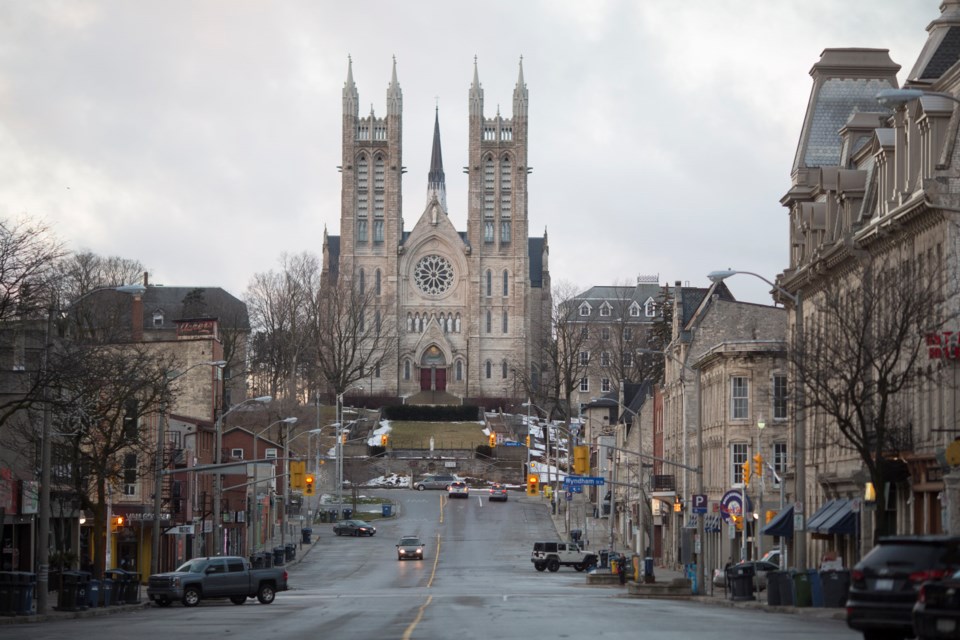I’ve been at planning meetings where someone proposes a new project downtown that’s going to be taller than what’s normally allowed, and invariably some people complain about the effect on their view of the Basilica of Our Lady. I’ve always lived my life by a simple rule that says if you can’t see the Basilica from where you’re standing then just walk 10 metres in any direction.
But I’ve been developing a different point of view in the last several years, and it’s been calcified by recent events and the discovery of a mass grave containing 215 children on the grounds of the Kamloops Residential School: Let’s none of us ever have to look at that building ever again.
That won’t be easy because it seems like our town was literally built around that 'Church on the Hill.' It’s been an effective symbol for branding for numerous Guelph organizations, and it’s all over my website too. It’s photogenic, and it gives a Guelph a certain European flavour that so many of our residents desperately crave.
But I’m over that.
The proverbial nail in the coffin for me was when the Basilica’s rector, Father Ian Duffy, told GuelphToday’s Richard Vivian that, “If the church in any way collaborated with this tragedy, then the church is a logical place, especially for the Indigenous community, to begin to do their grieving and hopefully the grieving leads to a road of healing as well.”
The word “if” is doing a lot of work there, because while there were other churches involved in running residential schools, 70 per cent of them were run by the Catholic church, and to date it is the one religious institution that’s held out on accepting any official responsibility.
That’s just one tragedy. Remember that the Catholic church has also dragged its heels on a confession about the millions of children around the world abused by priests, and the conspiracy to help those priests evade secular consequences or punishment.
These crimes against humanity are all I can think about when I see that church on the hill now.
When Mayor Cam Guthrie announced that the flags at City Hall would fly at half-staff, I checked around to see who else was doing the same. The University of Guelph lowered its flags, and so did the Upper Grand District School Board, and the Wellington Catholic District School Board.
The websites for these groups also published statements of support for our Indigenous communities, but on the website for the Diocese of Hamilton, which oversees the Basilica, there were just crickets when it came to local comment.
Father Duffy shared a formal statement, posted on the diocese web site, from Richard Gagnon, archbishop of Winnipeg and president of the Canadian Conference of Catholic Bishops, with GuelphToday.com. In it, Gagnon said, “The news of the recent discovery is shocking … Honouring the dignity of the lost little ones demands that the truth be brought to light.”
“Be brought to light”? How could this discovery of a mass grave be “shocking” when residential school survivors describe the sight of nuns and priests digging on school grounds? Are we to understand that members of the church have not even confessed their sins to themselves?
I understand that for a lot of people in Guelph the Basilica is a place of comfort, relief and healing.
But perhaps it’s time to admit that the church is not part of the solution, and if they’re not part of making a better future, then why the heck should you care if your view of it is blocked? We should stop commodifying the Basilica of Our Lady as a symbol of our town, we should not consider it as a landmark, and the view of it from your backyard should not be venerated as a point of pride.
Instead, let’s invest that Guelph pride (to borrow a term) in the Indigenous members of our community who gathered in peace and determination in front of the Basilica and demanded to be seen and heard in their pain.
They say confession is good for soul, and the time has come for the Catholic church to lead by example.
